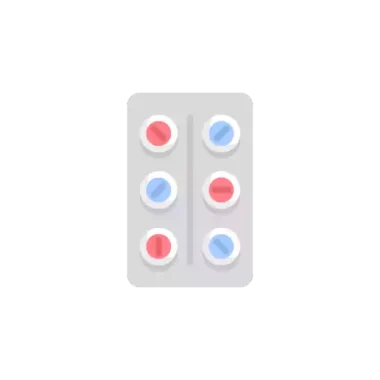Composition Chloramphenicol (NA)
Rx Prescription Required
Pack packet of 5 ml Eye Drop
Storage Store below 30°C
Chemical Class Amphenicols
Action Class Chloramphenicol
Habbit Forming No
Manufacturer Sunways India Pvt Ltd
Manufacturer address 1002-1003, 10th Floor, Windfall, Sahar Plaza, J.B.Nagar, Andheri-Kurla Road, Andheri (East), Mumbai-400059. Maharashtra, India.

Chlorosun Eye Drop
Chlorosun Eye Drop is an antibiotic that fights bacteria. It is used to treat infections of the eye caused by bacteria. It works by killing the bacteria that cause these problems.
Basic Info
Description
Chlorosun Eye Drop helps to improve your symptoms and cure the underlying infection. Follow your doctor’s instructions precisely for administering this medicine in the eye. It should be used regularly at evenly spaced time intervals as prescribed by your doctor. Do not skip any doses and finish the full course of treatment even if you feel better. Stopping the medicine too early may lead to the infection returning or worsening.
It is effective in killing many types of bacteria. However, it will not work for other types of eye infections (e.g.viral) and therefore, should only be used if prescribed by your doctor. Unnecessary use of any antibiotic can lead to a decrease in its effectiveness in the future.
Commonly seen side effects seen with this medicine include temporary stinging in eyes and blurred vision after administration. Consult your doctor if these side effects persist or if your condition worsens. Pregnant and breastfeeding mothers should consult their doctor before using it. Contact lenses should not be worn while you are using this medicine or while you have the bacterial eye infection. This medicine should not be used for longer than five days without consulting your doctor.
Uses
Bacterial eye infections
How To Use
This medicine is for external use only. Use it in the dose and duration as advised by your doctor. Check the label for directions before use. Hold the dropper close to the eye without touching it. Gently squeeze the dropper and place the medicine inside the lower eyelid. Wipe off the extra liquid.
MOA
Chlorosun Eye Drop is an antibiotic which stops the growth of bacteria that cause eye infections. It does so by preventing synthesis of essential proteins required by bacteria to carry out vital functions. This does not directly kill the bacteria, but prevents them from increasing in numbers, and eventually clears up the eye infection.
What If
Information not available at the moment. Please check back later.
Drug Tips
You have been prescribed Chlorosun Eye Drop for the treatment of bacterial infections of the eye.
Do not skip any doses and finish the full course of treatment even if you feel better.
Do not touch the tip to any surface, or to your eye, to avoid contamination.
Wait for at least 5-10 minutes before delivering the next medication in the same eye to avoid dilution.
You should continue using the medicine for 48 hours after your symptoms have cleared up. However, do not use for longer than five days without consulting your doctor.
It may cause short term blurring of vision when first used. Use caution before driving or using machines.
Talk to your doctor if your symptoms haven’t started to improve within two days of starting treatment, if they get worse during treatment, or if you get another eye infection.
Do not wear contact lenses until your infection clears up.
Throw away any medicine left at the end of the 5 day course.
Faqs
Q. How long does Chlorosun Eye Drop take to work?
Usually, Chlorosun Eye Drop starts working soon after taking it. However, it may take some days to kill all the harmful bacteria and make you feel better.
Q. What if I don’t get better after using Chlorosun Eye Drop?
Inform your doctor if you don’t feel better after finishing the full course of treatment. Also, inform him if your symptoms are getting worse while using this medicine.
Q. Can I stop taking Chlorosun Eye Drop when my symptoms are relieved?
No, do not stop taking Chlorosun Eye Drop and complete the full course of treatment even if you feel better. Your symptoms may improve before the infection is completely cured.
Benifits
In Bacterial eye infections
Chlorosun Eye Drop is an antibiotic medicine. It works by stopping the growth of the bacteria that is causing the infection. It helps relieve symptoms such as pain, redness, itching or soreness caused due to eye infections. The dose and duration of treatment will be decided by your doctor based on your condition. Make sure you complete the full course of treatment. This will ensure that the infection is completely cured and prevent it from returning.
Side Effects
Most side effects do not require any medical attention and disappear as your body adjusts to the medicine. Consult your doctor if they persist or if you’re worried about them
Blurred vision
Stinging in the eyes
Safety Profile
Alcohol:
No interaction found/established
Pregnancy:CONSULT YOUR DOCTOR
Chlorosun Eye Drop may be unsafe to use during pregnancy. Although there are limited studies in humans, animal studies have shown harmful effects on the developing baby. Your doctor will weigh the benefits and any potential risks before prescribing it to you. Please consult your doctor.
Breast feeding:CONSULT YOUR DOCTOR
Chlorosun Eye Drop is probably unsafe to use during breastfeeding. Limited human data suggests that the drug may pass into the breastmilk and harm the baby.
Driving:UNSAFE
Chlorosun Eye Drop may cause blurring of your vision for a short time just after its use. Do not drive until your vision is clear.
Kidney:
No interaction found/established
Liver:
No interaction found/established
Refferences
MacDougall C, Chambers HF. Protein Synthesis Inhibitors and Miscellaneous Antibacterial Agents. In: Brunton LL, Chabner BA, Knollmann BC, editors. Goodman & Gilman’s: The Pharmacological Basis of Therapeutics. 12th ed. New York, New York: McGraw-Hill Medical; 2011. pp. 1526-29.
Chambers HF, Deck DH. Tetracyclines, Macrolides, Clindamycin, Chloramphenicol, Streptogramins, & Oxazolidiones. In: Katzung BG, Masters SB, Trevor AJ, editors. Basic and Clinical Pharmacology. 11th ed. New Delhi, India: Tata McGraw Hill Education Private Limited; 2009. pp. 802-803.
Briggs GG, Freeman RK, editors. A Reference Guide to Fetal and Neonatal Risk: Drugs in Pregnancy and Lactation. 10th ed. Philadelphia, PA: Wolters Kluwer Health; 2015. pp. 244-25.
Chloramphenicol. Romford, Essex: Martindale Pharma; 2010 . view
Mayo Clinic. Chloramphenicol. view
Chaves RG, Lamounier JA. Breastfeeding and maternal medications. J Pediatr . 2004;80:S189-98. view






